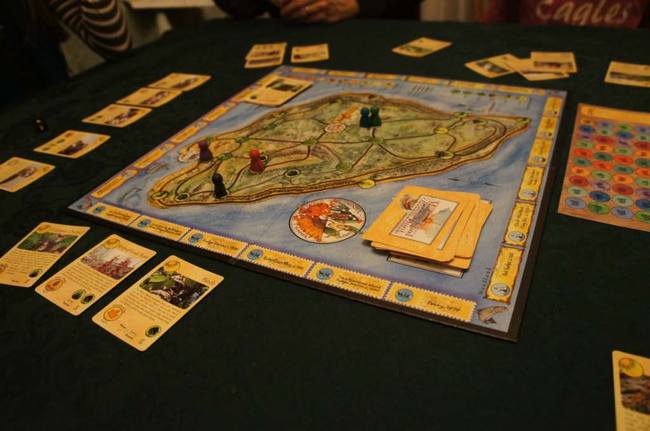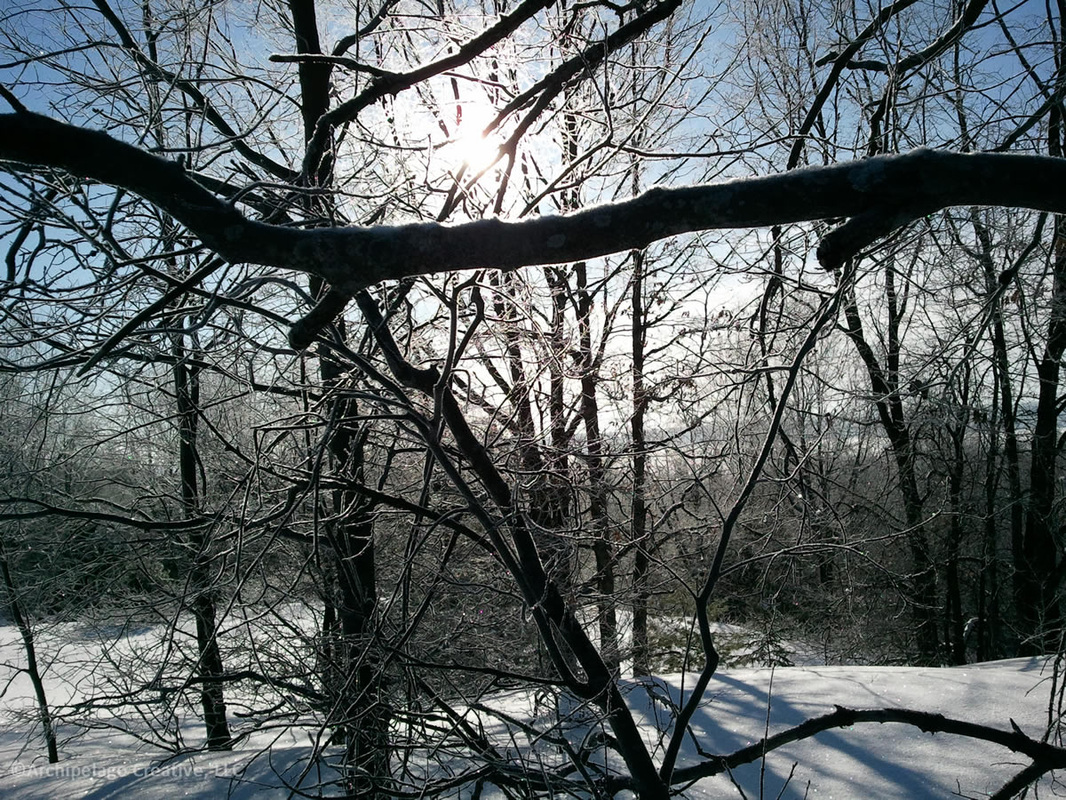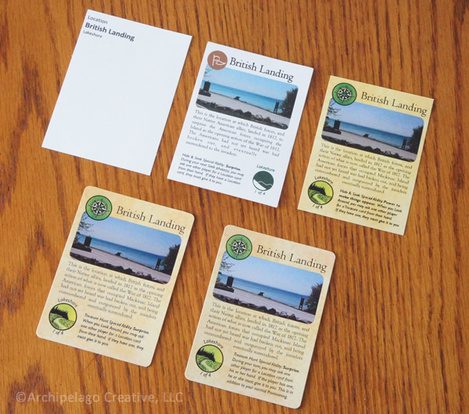| With all the various scuffles arising around the world these days, I would even go farther than Carl Sagan does in this quote: We consider our own time special to our peril. Those who study history realize that most things people consider critical, like who has what piece of land, or who believes in someone's words, wind up being equalized by time. Photo by Barbara M. Overdier. |
|
1 Comment
There’s something different about being on an Island. Perhaps you’ve felt it, too. Is it the fact that you’re surrounded by water? That you can’t really get lost? That you’re one of a select few folks that can make it there? Maybe all those things. My first experience with an Island was the summer I spent building trails on Apple Island in Orchard Lake when I was in High School. We’d fill trash cans with wood chips, load them on a pontoon boat, drive them to the Island, and spread them out. There was plenty of time to wander, and I remember that first magical feeling of being in a place with finite boundaries, but many stories. Several families had homesteaded on Apple Island, and it was fun to imagine being in a place all your own, away from civilization. It is much like the feeling you get when backpacking: You carry your house with you, like a turtle, and all you need to do is worry about living through the day and enjoying the scenery. Barbara and I spent a honeymoon of sorts on South Manitou Island in Lake Michigan, and have been back several times since. Being a wilderness area of Sleeping Bear Dunes National Lakeshore, there you are truly on your own, but with the ghosts of the former residents and with current wonders around every turn. On Mackinac Island (pictured above), we get that same feeling, but with the comforts of a bed and breakfast or condo. You can wander in the park and pretend like civilization is a long way away, or what it would be like to be the first one to discover a new place.
The Island setting was helpful, too, when designing Mackinac Island Treasure Hunt, because it makes it easy to contain where players can move and what information to focus on. Other games have figured this out, as our game collection can attest: Settlers of Catan, Forbidden Island, and even Risk are a few that use Islands as theme constraints. Islands have power, and though no person is an Island, it has always fascinated me that many heroes of power in fiction are orphans, separate from the human mainland as it were. Frodo, Harry Potter, James Bond, Lyra Belaqua, etc. all have the ability to put everything on the line for their fellows because they have no physical connection to the world. These characters, like the Islands I have known in Michigan’s waters, are quiet, full of intricacies and nuance, and worth exploring. Does knowing what’s going on behind the scenes help or hinder your enjoyment of something? Do you really care how many steps went into making the dish you just ate at the restaurant, or do you just enjoy it as a thing unto itself? I’ve always been surprised, both in my own cooking and watching or reading about others, how much work, and how many steps, go into making something that tastes really good. How about movies? Do the “Making Of” shorts often included on disks these days help or hinder your enjoyment of the movie? I have to say that sometimes knowing the tricks that go into film making make the movie a bit less enjoyable, at least the second time around. That said, I heard a lot about how they made Gravity, the recent Academy Award-nominated space thriller, and that didn’t keep me from enjoying the movie one bit. It can be the same for board games. Did you know game designers have a stable of common rule types, called game mechanics, that they combine in unique ways to make the games you like? Our Mackinac Island Treasure Hunt uses a wide variety of mechanics in its various games.
But in the end, it’s how the mechanics are combined to support the game’s theme that makes the game unique and fun. Can you identify any of the mechanics in your favorite games?  Yesterday we were out on our standard dog walk when we came out on a high place overlooking the land east of Traverse City. Everything had been coated with frost during the night, it was clear and the sun was bright, so the entire landscape sparkled like someone had thrown tinsel over everything. This is known as hoarfrost, which forms when the air is moist and the temperature drops quickly at night. This quick cooling causes the trees and things to be colder than the air, so the moisture in the air goes straight from water vapor to ice crystals, making beautiful patterns.  We have been treated to lots of interesting phenomena during this cold, cold winter. Several days ago it was sun dogs, those chunks of rainbows that appear on either side of the sun when the air has ice crystals suspended in it. Two nights ago, there was a pillar of fire as the sun set (cheesy cell-phone photo to the right), probably due to similar icy circumstances. All the Great Lakes are frozen, possibly causing our current below-zero temperatures. Which has got me thinking about how the wild animals can handle this winter. Deer were especially on my mind, as the deep snow and cold temperatures must make their lives difficult. It sounds like it has been difficult for them, but perhaps that’s not a bad thing, biologically speaking. The strong will survive. And this weather may be good for smaller animals, as their predators find them harder to find.
The folks on Mackinac Island have been hosting deer and coyotes this winter. It is amazing how quickly the animals take advantage of the ice cover to check out new places. The posts I’ve seen have been celebrating deer on the Island. But if they're still there in the spring, I’m wondering if they'll eat the wildflowers. When you visit North and South Manitou Islands, you immediately notice how open the forest is on North Manitou, with much less undergrowth than South Manitou. There are deer only on North Manitou. But the light is changing. The crows are cawing loudly, and the woodpeckers are drumming. Hopefully we can all hang in there until spring! How do you create new things? It seems to me that there are folks who can visualize a complete concept, then execute it. And then there are folks, like me, whose visualization of the final product is incomplete, so we have to produce many versions of the concept, each time changing something until you get to a satisfactory end result. For example, here is a photo of most of the different versions of one card from Mackinac Island Treasure Hunt, from the earliest in the top left, to the latest in the bottom right: I’ve always been impressed with folks who can create without iteration: Someone who can sit down with a blank piece of paper or some time and walk away with a completed work. Fine artists and illustrators do this all the time. Musicians, too. Beethoven, for example, was famously deaf when he composed and premiered his Symphony No. 9., so he couldn't listen to it, tweak it, and try again.
But what’s really happening there is that they’ve just front-loaded their iteration: Musicians play scales or rudiments. Artists sketch or do studies. Beethoven was an amazing improviser, which must have been quite useful when he could no longer hear. So, when trying something new, iteration is necessary. The artists that helped us work on Mackinac Island Treasure Hunt understood that, and were quite patient through the whole process. Earnest Hemingway wrote 47 endings to A Farewell to Arms. Now, to apply that patience to everything else! |
AboutMusings from Jim Muratzki, designer of Mackinac Island Treasure Hunt. Archives
December 2014
Categories
All
|








 RSS Feed
RSS Feed